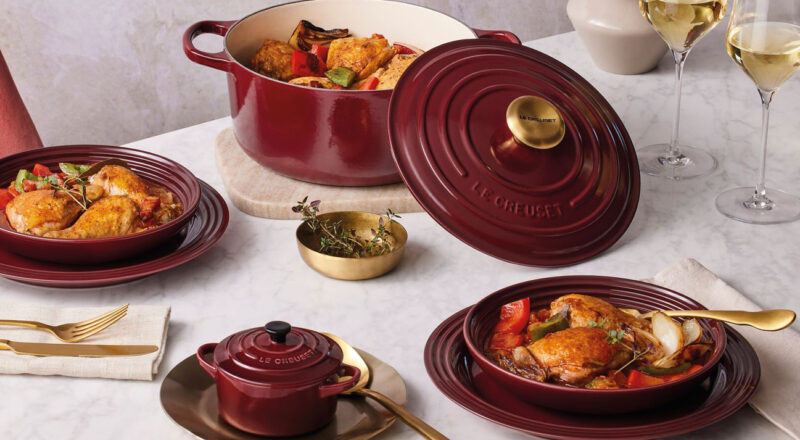The cast iron braiser is a versatile kitchen tool that can significantly enhance your culinary skills. Whether you’re a professional chef or a home cook, learning some effective cooking hacks can transform your cooking experience. In this article, we will explore various tips and tricks to make the most of your cast iron braiser and improve your kitchen techniques.

Why Choose a Cast Iron Braiser?
A cast iron braiser is not just another piece of cookware; it’s a game-changer for many dishes. Its ability to distribute heat evenly makes it perfect for cooking a variety of meals. Additionally, its robust construction ensures durability and longevity, making it a worthwhile investment for any kitchen.
The Basics of Using a Cast Iron Braiser
Seasoning Your Braiser
Before you start cooking, it’s essential to properly season your cast iron braiser. Seasoning creates a natural non-stick surface and prevents rusting. To season your braiser, apply a thin layer of vegetable oil and heat it in the oven at 375F for about an hour. Allow it to cool completely before storing.
Preheating for Optimal Results
One of the simplest yet most effective cooking hacks is preheating your braiser. This step ensures even cooking and prevents food from sticking. Place the braiser on the stove over medium heat for a few minutes before adding any ingredients.
Mastering the Art of Braising
Choosing the Right Ingredients
Braising involves cooking food slowly in a small amount of liquid. To master this technique, choose ingredients that benefit from slow cooking, such as tougher cuts of meat and hearty vegetables. The slow cooking process breaks down connective tissues, resulting in tender and flavorful dishes.
Enhancing Flavors with Aromatics
Aromatics like onions, garlic, and herbs are essential for adding depth to your braised dishes. Saut these ingredients in the braiser before adding your main ingredients to build a rich and flavorful base.
Advanced Cooking Techniques
Using Your Braiser for Baking
Did you know you can also use your cast iron braiser for baking? Its even heat distribution makes it perfect for baking bread or desserts. Try baking a crusty loaf of bread or a delicious fruit cobbler right in your braiser.
One-Pot Meals for Convenience
For busy days, take advantage of your braiser for making one-pot meals. Combine proteins, grains, and vegetables in a single dish to save time and reduce cleanup. Your cast iron braiser will cook everything evenly, ensuring a delicious and convenient meal.
Maintenance and Care
Cleaning Your Braiser
Proper cleaning is crucial for maintaining your cast iron braiser. Avoid using soap, as it can strip the seasoning. Instead, use hot water and a brush to scrub away any food residue. For stubborn bits, add a little kosher salt as an abrasive.
Preventing Rust
To prevent rust, always dry your braiser thoroughly after washing. Store it in a dry place and apply a light coating of oil before storing to maintain the seasoning.
Braiser vs. Casserole Pot
Understanding the differences between a braiser and a casserole pot can help you choose the right tool for each dish. The braiser’s low sides make it perfect for browning and braising, while a casserole pot is better suited for soups and stews.
Indoor Grilling
Your cast iron braiser can double as a grill pan for indoor grilling. Its ability to retain heat makes it ideal for searing meats and vegetables to perfection.
Rust Prevention Tips
Discover additional tips for keeping your braiser rust-free and in excellent condition.
Le Creuset Braiser
Explore how a Le Creuset braiser can elevate your cooking game and why it’s a favorite among chefs.

FAQs
What can I cook in a cast iron braiser?
You can cook a wide range of dishes, from braised meats and vegetables to baked goods and one-pot meals.
How do I maintain the seasoning on my braiser?
Regularly apply a thin layer of oil after cleaning to maintain the seasoning and prevent rust.
Can I use my braiser on an induction cooktop?
Yes, most cast iron braisers are compatible with induction cooktops. Always check the manufacturer’s guidelines.
For more detailed guides and cooking tips, visit our website.
This article contains affiliate links. We may earn a commission at no extra cost to you.

